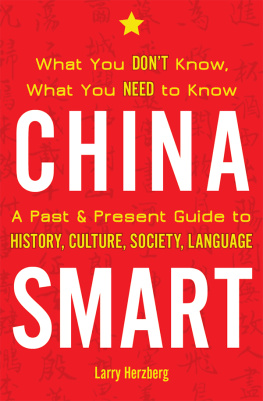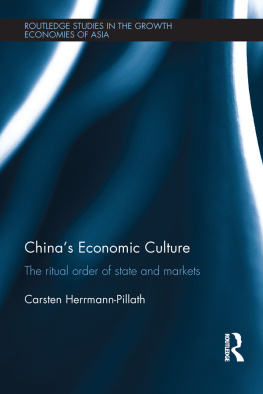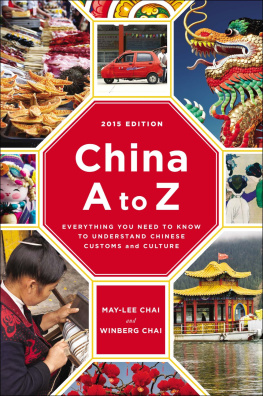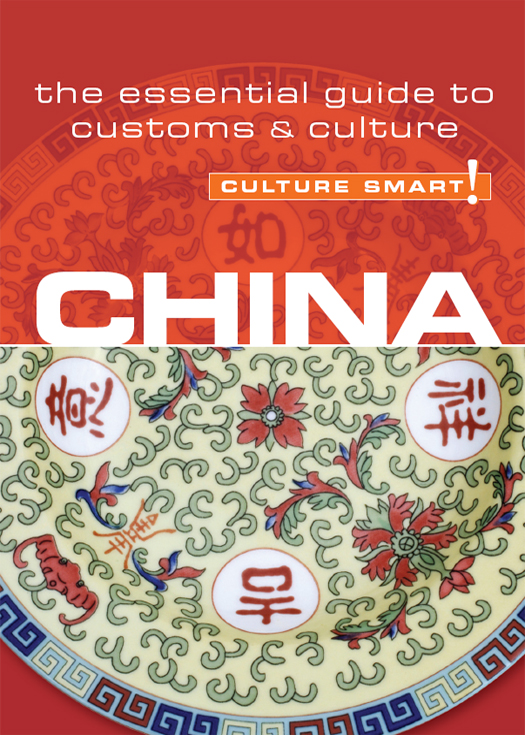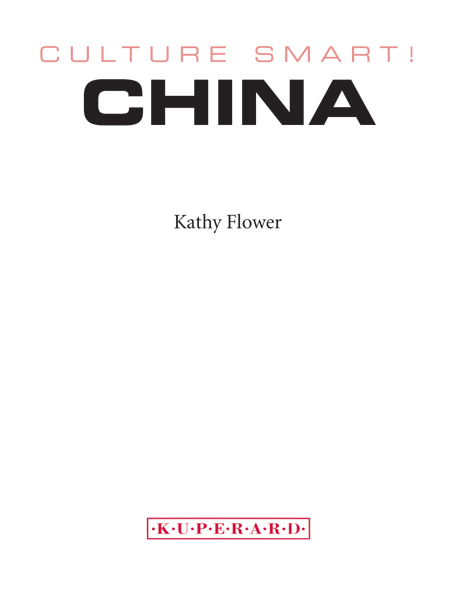eISBN: 978-1-85733-541-5
British Library Cataloguing in Publication Data
A CIP catalogue entry for this book is available from the
British Library
Copyright 2003, 2010 Kuperard
Revised and updated edition 2010
All rights reserved. No part of this publication may be reprinted or reproduced, stored in a retrieval system, or transmitted in any form or by any means without prior permission in writing from the publishers.
Culture Smart! is a registered trademark of Bravo Ltd
First published in Great Britain 2003
by Kuperard, an imprint of Bravo Ltd
59 Hutton Grove, London N12 8DS
Tel: +44 (0) 20 8446 2440 Fax: +44 (0) 20 8446 2441
www.culturesmart.co.uk
Inquiries:
Series Editor Geoffrey Chesler
Cover image: Chinese plate with floral pattern. Astock/Corbis
Brushwork calligraphy on by Bernard Lui
Images Fotolia.com
Image on Dreamstime.com
The following images are reproduced under Creative Commons licenses:
2.0 Generic, Luo Shaoyang;
ShareAlike 3.0, Takeaway; Attribution 3.0 Unported,
Zheng Zhi
v3.1
About the Author
KATHY FLOWER is a radio and TV producer, writer, and trainer who has specialized in the teaching of English as a Foreign Language. After leaving Paris, where she worked with the British Council, she went to Beijing from 1981 to 1983 and co-presented Chinas first major English language teaching series, Follow Me, on Chinese TV. The series ran every night for six years and she is still known to hundreds of millions of viewers as laoshi, or teacher. She has been back to work in China many times since. She runs an independent radio production company and lives in Sussex and southern France.
The Culture Smart! series is continuing to expand.
For further information and latest titles visit
www.culturesmartguides.com
The publishers would like to thank CultureSmart!Consulting for its help in researching and developing the concept for this series.
CultureSmart!Consulting creates tailor-made seminars and consultancy programs to meet a wide range of corporate, public-sector, and individual needs. Whether delivering courses on multicultural team building in the USA, preparing Chinese engineers for a posting in Europe, training call-center staff in India, or raising the awareness of police forces to the needs of diverse ethnic communities, it provides essential, practical, and powerful skills worldwide to an increasingly international workforce.
For details, visit www.culturesmartconsulting.com
CultureSmart!Consulting and CultureSmart! guides have both contributed to and featured regularly in the weekly travel program Fast Track on BBC World TV.
contents
Map of China
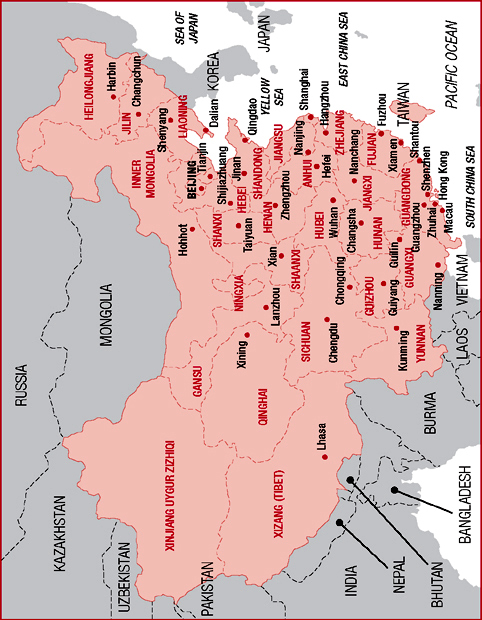
introduction
In the 1980s, I was invited to dinner at a Chinese friends tiny, concrete floored apartment. Her mother-in-law came in to inspect me, the strange foreign creature. She asked, rather scornfully, if we had rice in the West and if we had tea. Then, triumphantly, she pointed to her tiny bound feet, inflicted on her when she was seven years old in a small provincial town in the 1930s. Well, I bet you dont have those in the West, she said, very proudly, and hobbled off to make the dinner. That old ladys daughter-in-law became a fluent English-speaking university professor; and her grandson works for a Western company and funded his own studies at London University. It is the story of modern-day China in a nutshell.
For thousands of years, the Chinese believed that they had created a perfect social system. Dynasties came and went, but Chineseness remained essentially unchanged until the twentieth century. Following invasion by the Japanese, civil war, and revolution, on October 1, 1949, Mao Zedong and the Communists took power. Until Maos death in 1976, China was largely closed off from the rest of the world, undergoing almost constant revolution at an often terrible price. When Mao died, the country cautiously opened its doors to the West and introduced a nascent market economy, called socialism with Chinese characteristics. China became the workshop of the world. Low wages and a low yuan boosted exports and gave jobs to millions, albeit on tiny salaries. Chinas status as an aspiring superpower was confirmed when it hosted the Olympic Games in 2008.
Soon after the spectacular Beijing Olympics, the world plunged into economic crisis. In China, too, factories closed, but most unemployed migrant workers made their way back to the countryside or tried their luck elsewhere. The government encouraged consumers at home to take the place of cash-strapped foreign buyers, with some success. The infinite patience and natural optimism that are part of the Chinese character has helped tide China over this bumpy patch. One thing, though, is sure: China can never again survive in splendid isolation from the rest of the world.
The Chinese have always taken a long-term view of events. They are proud of their ancient civilization and their modern acheivements. But this pride is no longer tainted by the paranoid and uninformed xenophobia of old. Among the young, educated urban elite there is an eagerness to discuss issues that were formerly off limits. Culture Smart! China aims to put all these changes into an historical context, explain deep-seated cultural attitudes, and guide the visitor through the maze of unfamiliar social situations. We hope it will enable you to discover for yourself the warmth, the intelligence, and the potential of the Chinese people.
I would like to dedicate this book to my friends in China. KF
Key Facts
| Official Name | The Peoples Republic of China (PRC); in Mandarin, Zhonghua RenminGonghe Guo | The island of Taiwan (which has its own government) is called the Republic of China. |
| Capital City | Beijing (Peking) |
| Main Cities | Chongqing (Chungking), Shenyang (Mukden), Wuhan, Nanjing (Nanking), Harbin | Major ports: Tianjin (Tientsin), Shanghai, Qingdao (Tsingtao), Guangzhou (Canton) |
| Area | 3,695,500 sq. miles (9,571,300 sq. km.) | China is the third-largest country in the world. |
| Terrain | Range of types. Mountains, deserts, and arid basins in the north and northwest. Mountainous in the south. Rolling hills and plains in the east. | Two thirds of China is mountain or desert. The low-lying east is irrigated by the rivers Huang He (Yellow River), Chang Jiang (Yangtze-Kiang), and Xi Jiang (Si Kiang). |
| Climate | Temperatures vary greatly in the arid north, with hot summers and very cold dry winters. The south and east are warmer and more humid, with rainfall all year-round |


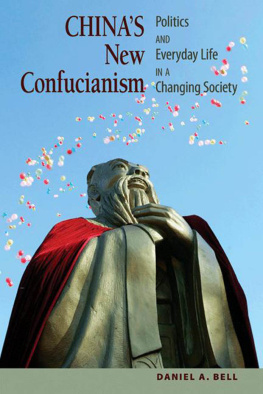
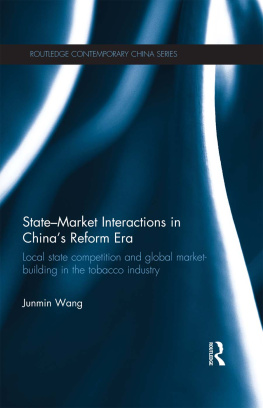
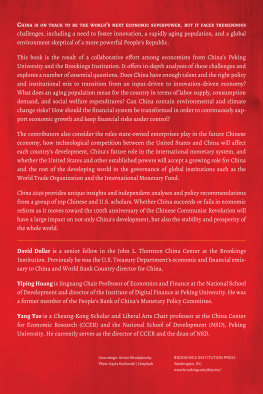
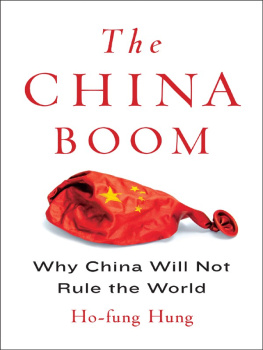
![Flower - China: [the essential guide to customs & culture]](/uploads/posts/book/200771/thumbs/flower-china-the-essential-guide-to-customs.jpg)
